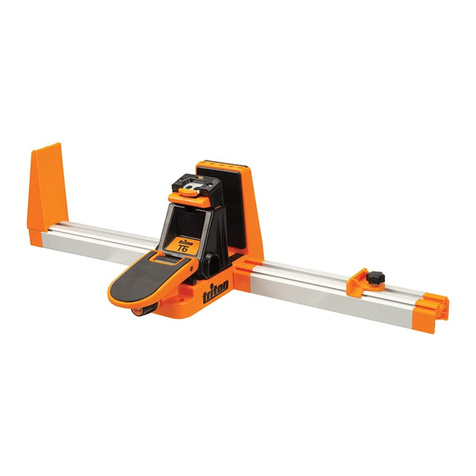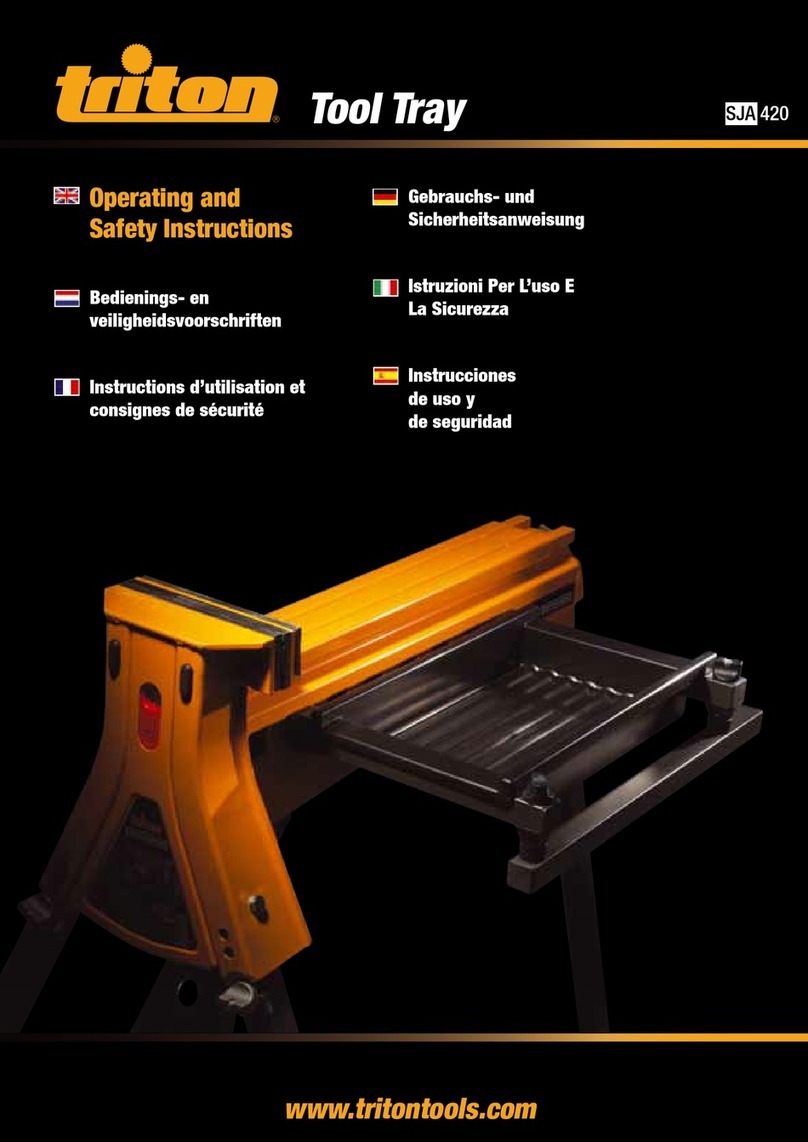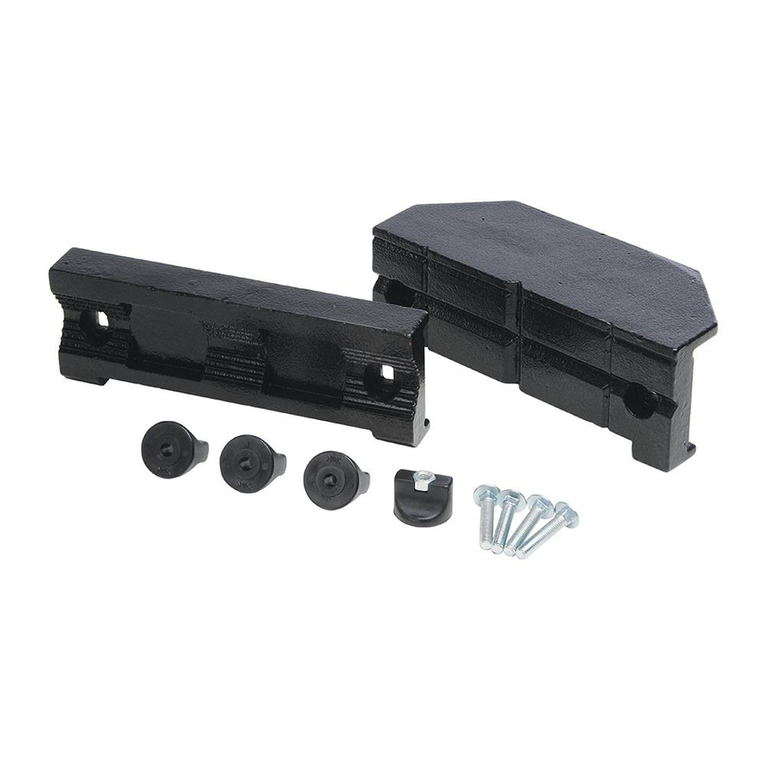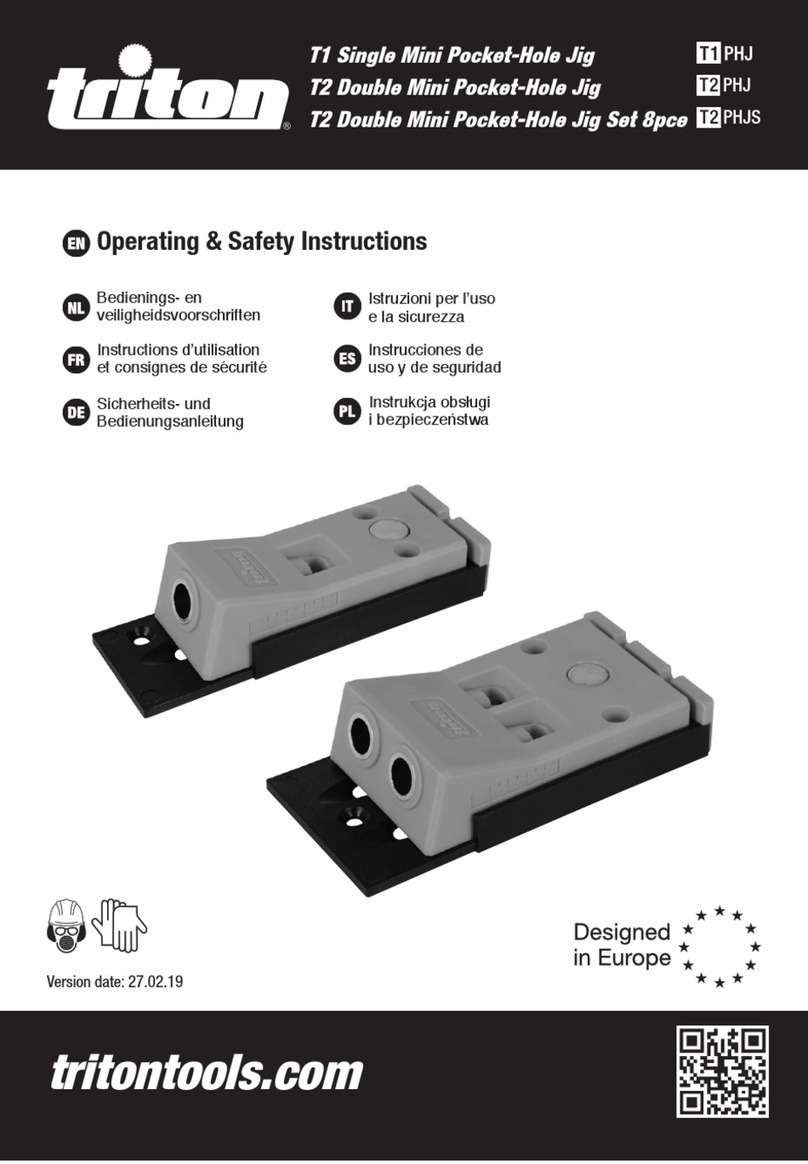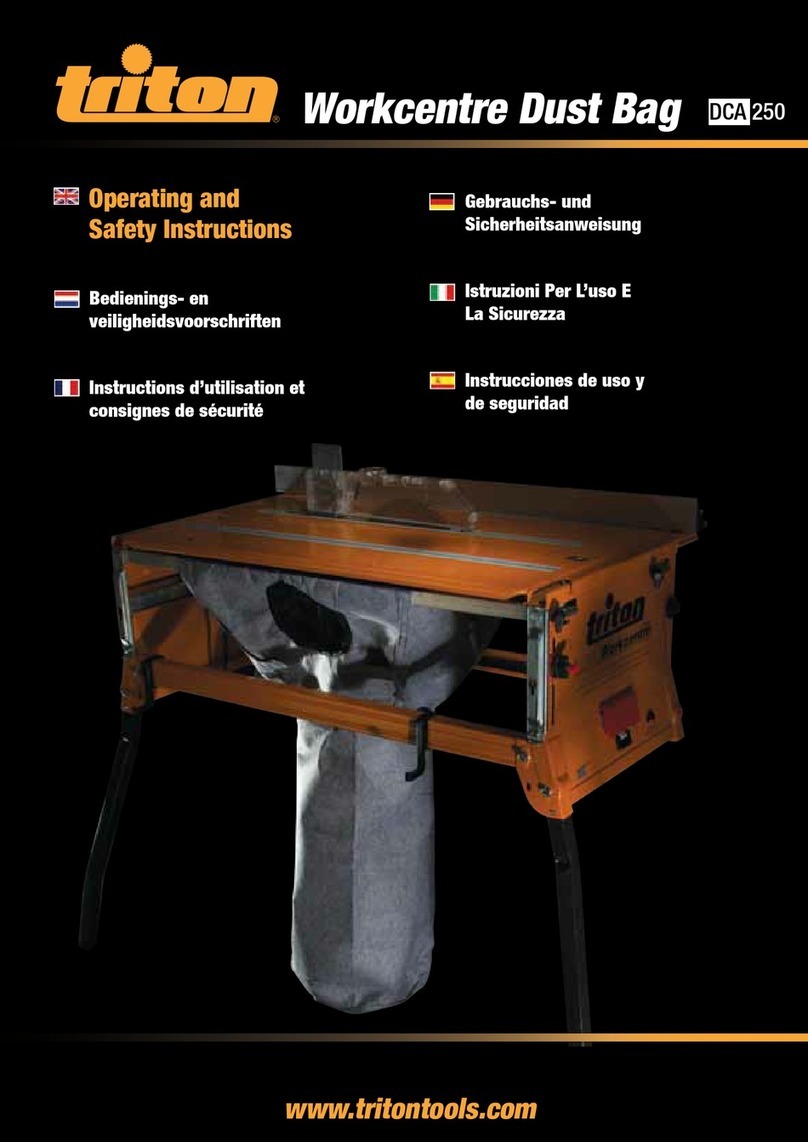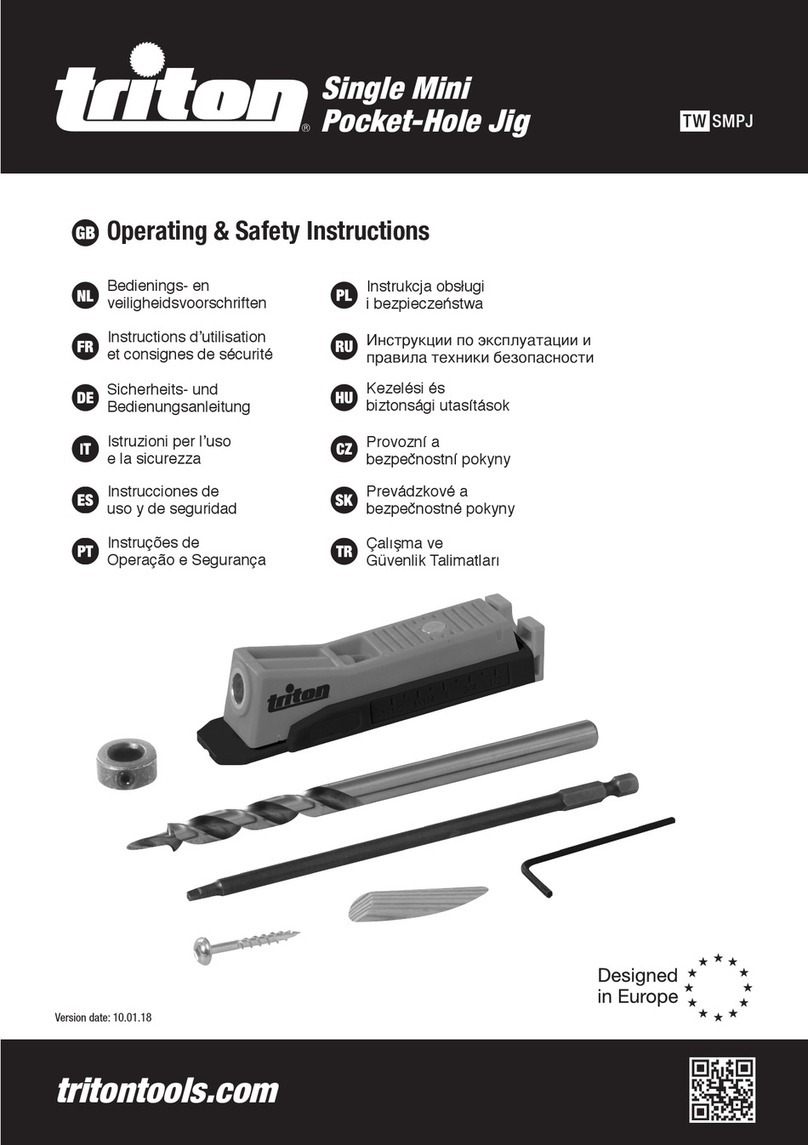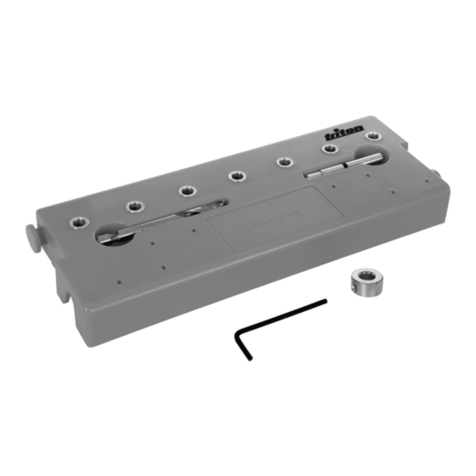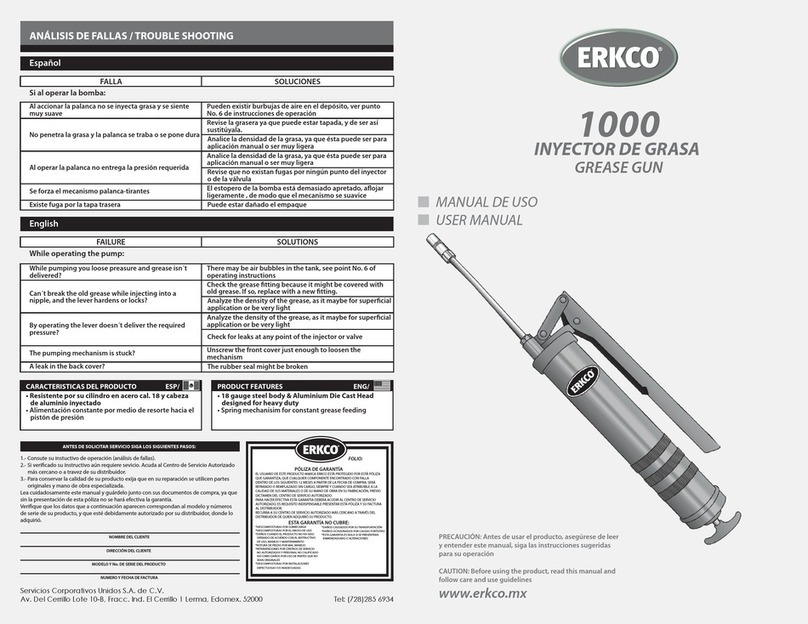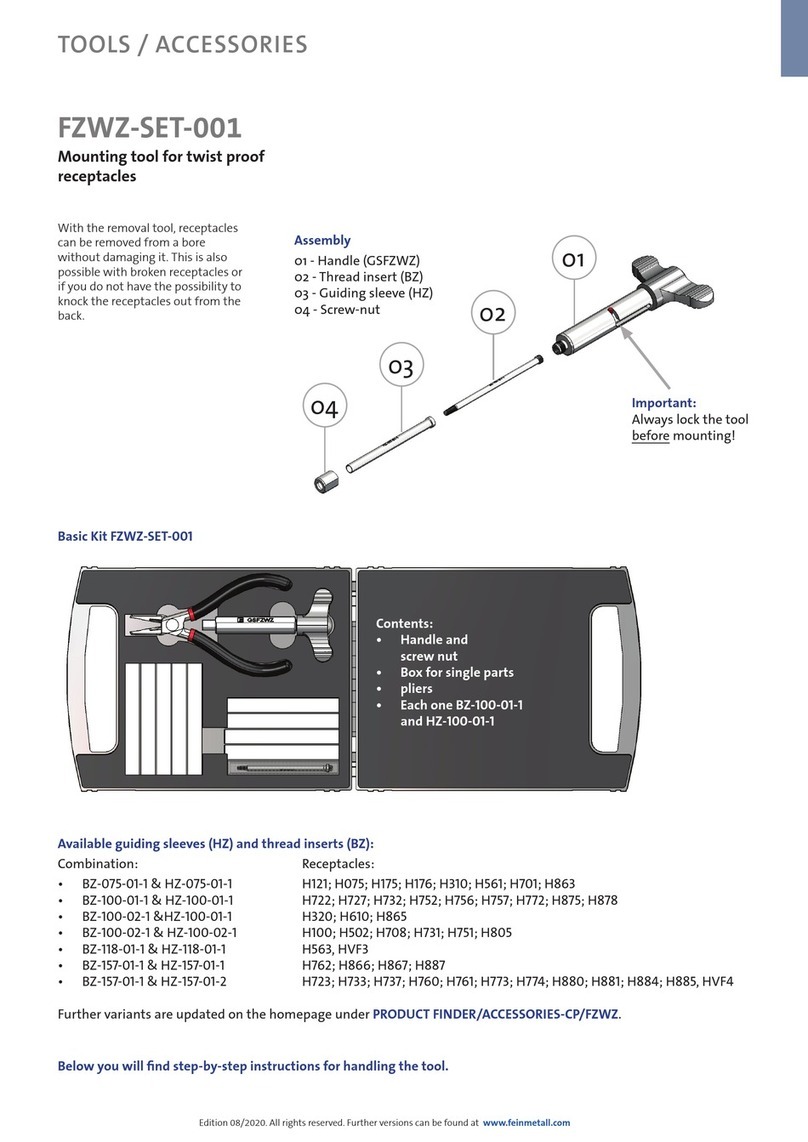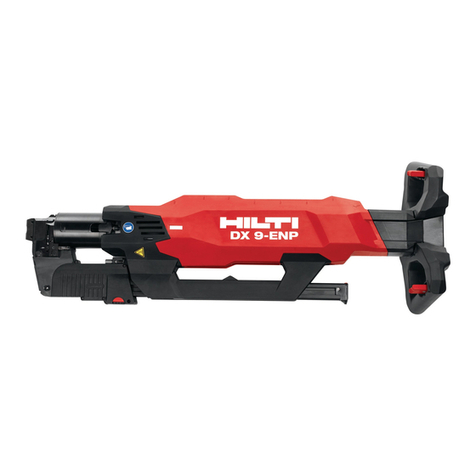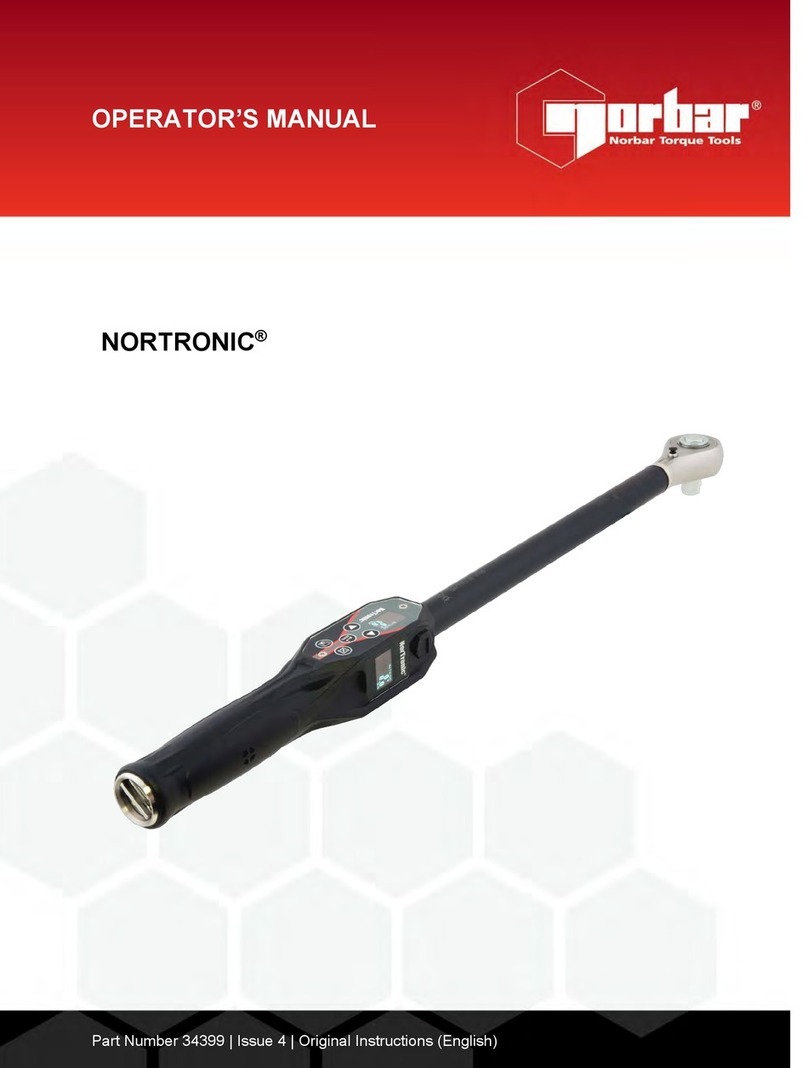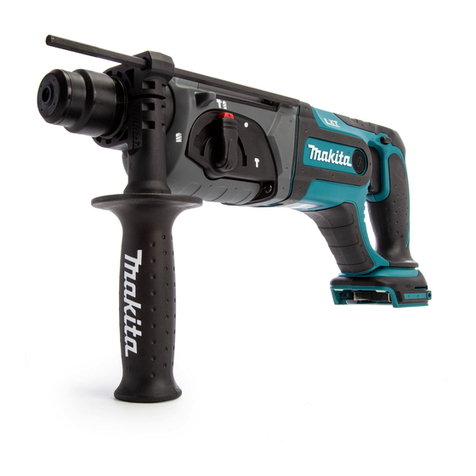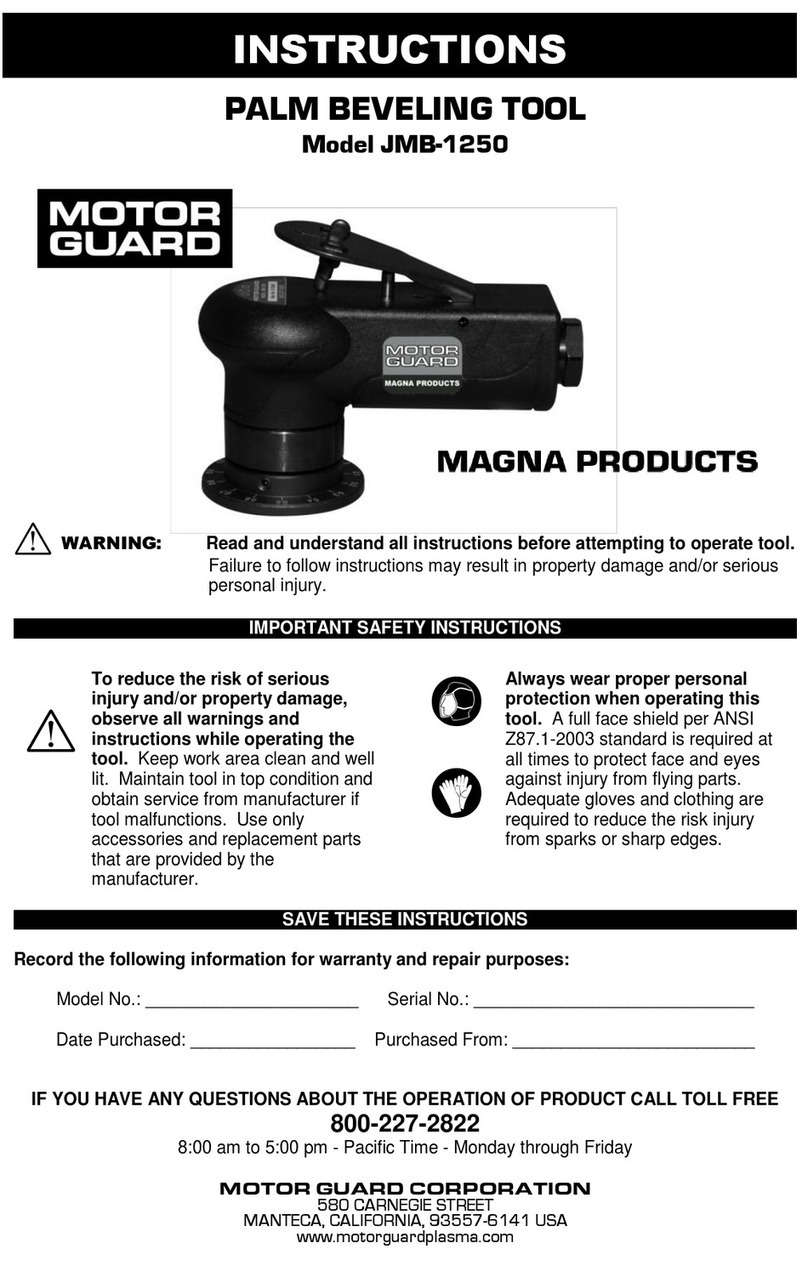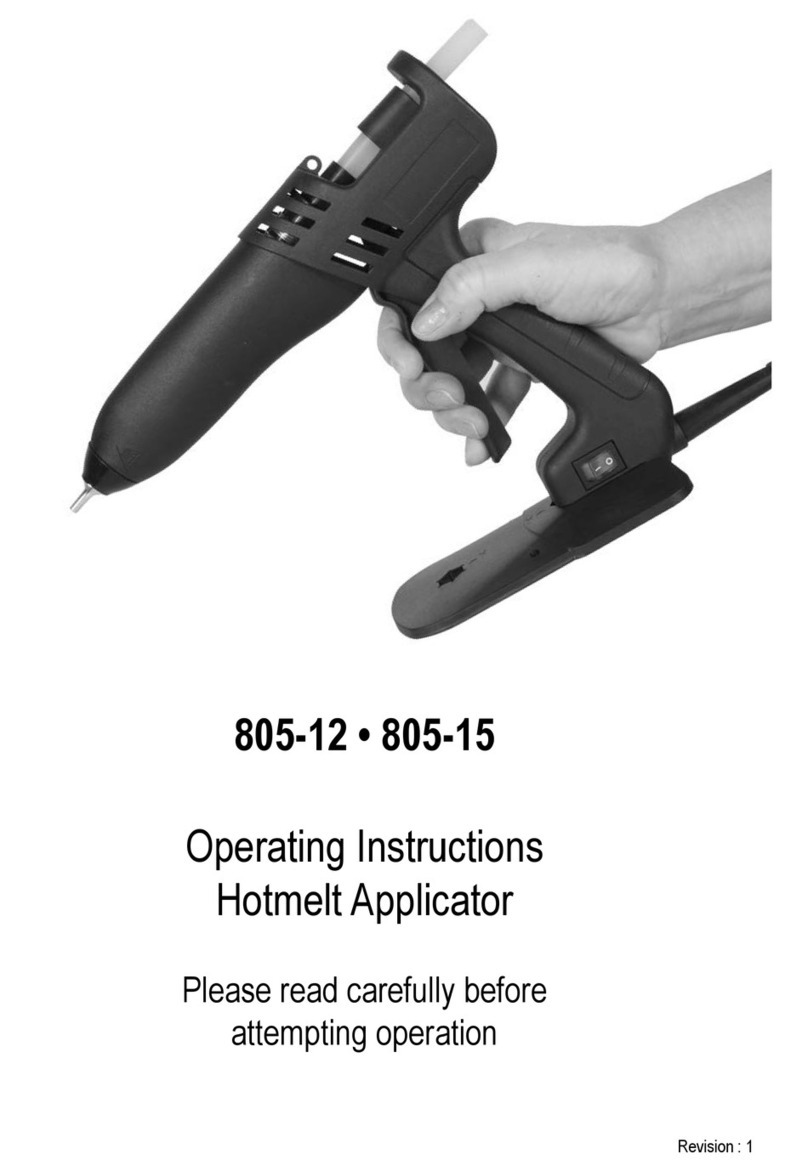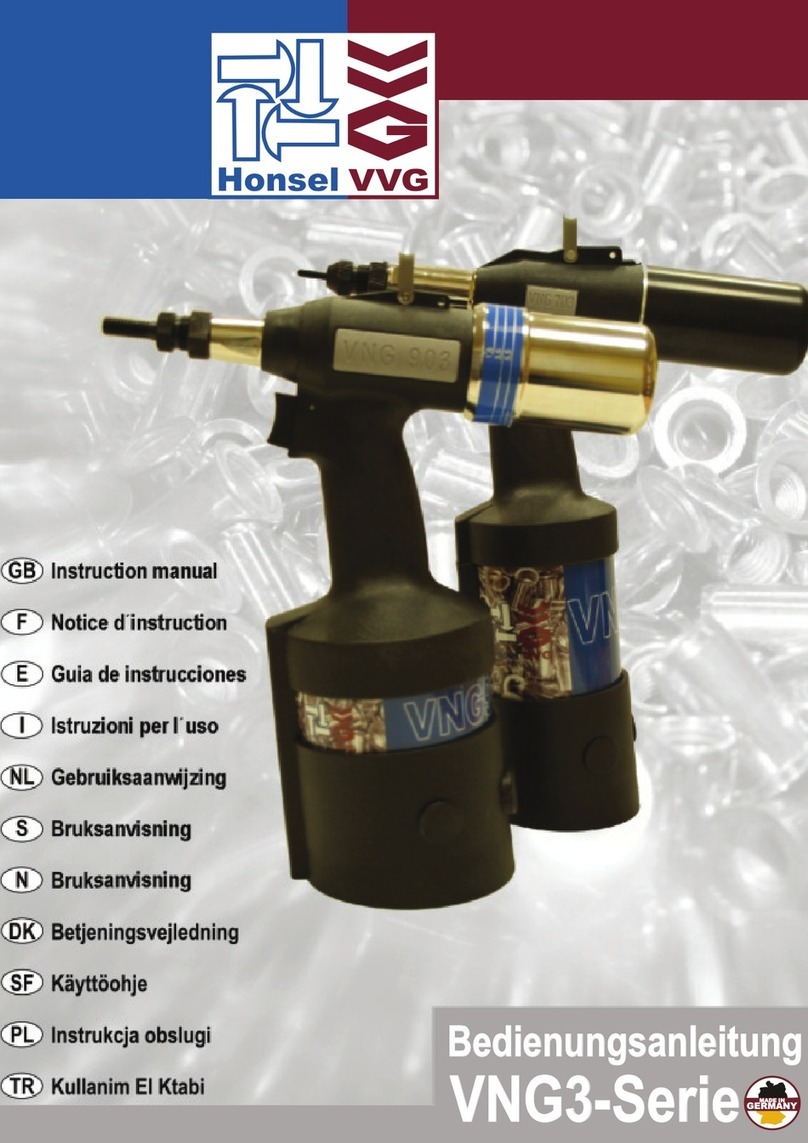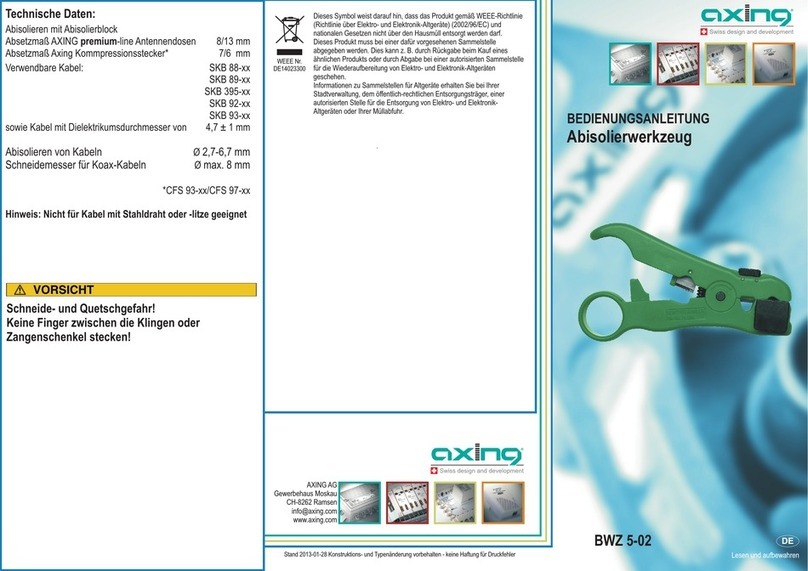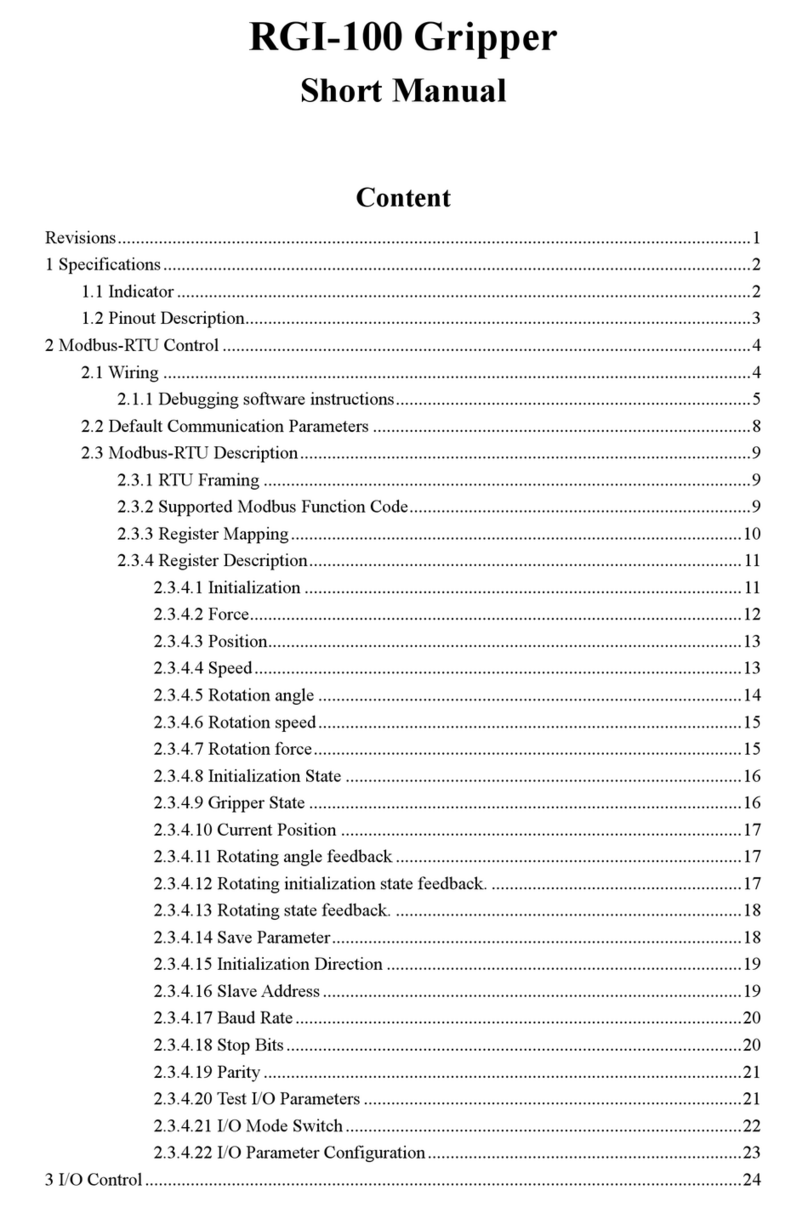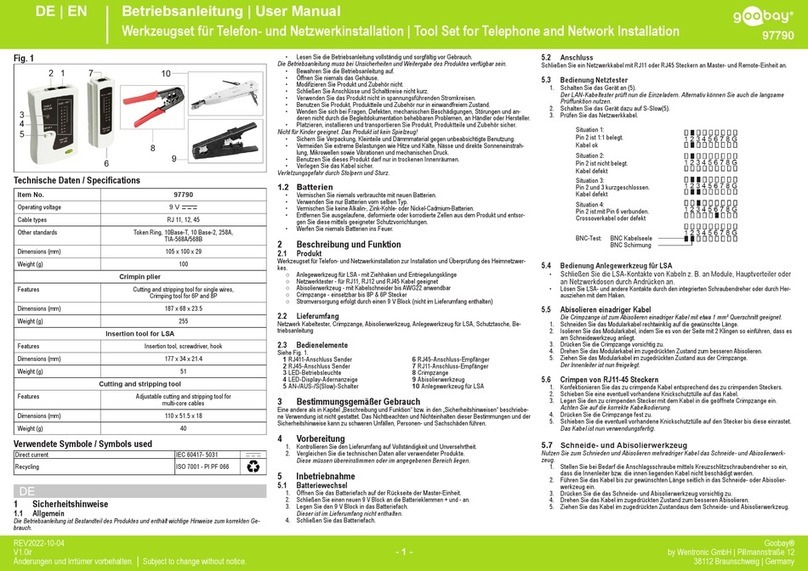
10
Wprowadzenie
Dziękujemy za zakup tego produktu marki Triton. Zapoznaj
się z niniejszymi instrukcjami: zawierają one informacje
niezbędne dla bezpiecznej i wydajnej obsługi produktu.
Produkt posiada szereg unikalnych funkcji, dlatego też,
nawet, jeśli jesteś zaznajomiony z podobnymi produktami,
przeczytanie instrukcji obsługi umożliwi Ci pełne
wykorzystanie tego wyjątkowego projektu. Przechowuj
niniejsze instrukcje w zasięgu ręki i upewnij się, że
użytkownicy narzędzia przeczytali i w pełni zrozumieli
wszystkie zalecenia.
Zastosowanie zgodne z przeznaczeniem
Przyrząd wiertarski do otworów kieszeniowych umożliwia
szybkie i wydajne wielokrotne użycie na drewnie o grubości
19 mm 3/4" bez korzystania z zacisku. Sprawdza się
podczas mocowania paneli, narożników i połączeń kątowych
na ucios.
Obsługa
OSTRZEŻENIE: W przypadku korzystania z
elektronarzędzi należy zawsze przestrzegać zaleceń
bezpieczeństwa i instrukcji danego narzędzia.
WAŻNE: Podczas wykonywania otworu kieszeniowego
zawsze przyłożyć odpowiednią siłę nacisku do dołu.
WAŻNE: Zaleca się, aby zawsze przetestować ustawienia
na drobnym kawału drewna, przed wykonaniem otworów
kieszeniowych w materiale obróbki.
Uwaga: Najlepiej, aby końcówka wiertła pojawiła się blisko
środka nawiercanego.
1. Ustawić kołnierz głębokościowy na wskaźniku
19 mm 3/4" znajdującym się na wiertle (zdjęcie A).
Uwaga: Upewnij się, że grubość materiału jest bliska
19 mm 3/4", aby wykonać odpowiednie otwory kieszeniowe.
2. Wyrównać wkręt dociskowy nad płaską powierzchnią i
dokręć kluczem sześciokątnym (zdjęcie B).
3. Odpowiednio przymocować wiertło do wiertarki.
4. Umieścić przyrząd na krawędzi obrabianego przedmiotu
aby uzyskać dodatkową stabilność (zdjęcie C).
5. Włożyć wiertło do prowadnicy wiertła, aż do
zablokowania w odpowiednim położeniu w płycie
przytrzymującej wiertło (zdjęcie D).
6. Przyłożyć odpowiednią siłę nacisku do dołu na uchwyt
(zdjęcie E).
7. Rozpocząć wiercenie, aby płyta przytrzymująca wiertło
zwolniła (zdjęcie F).
Uwaga: Zastosuj nieduży ale pewny nacisk podczas
wiercenia w twardszym drewnie, aby się upewnić, że wiertło
wchodzi gładko w materiał obróbki
8. Aby wykonać otwór, kontynuować wiercenie, aż kołnierz
głębokościowy zetknie się z przyrządem (zdjęcie G).
Uwaga: Zadbać o to, aby przyrząd nie uległ
zanieczyszczeniu wiórami ani pyłem, by wiertło działało
skutecznie.
9. Wyjąć wiertło z płyty przytrzymującej wiertło (zdjęcie H).
10. Powtórzyć powyższe kroki, aby wykonać wymaganą
liczbę otworów, i wykończyć detal za pomocą wkrętów
samogwintujących i kołków (zdjęcie I).
Grubość drewna Wkręt
13 – 18 mm / 1/2" - 11/16" 25 mm / 1"
19 – 25 mm / 3/4" – 1" 30 mm / 1– 1/4"
26 – 30 mm / 1" – 1-1/4" 35 mm / 1-1/2"
Uwaga: W przypadku twardego drewna należy użyć gwintu
drobnozwojnego, a w przypadku drewna miękkiego –
grubozwojnego.
Akcesoria
Pełen asortyment akcesoriów, w tym przyrządów, kołków,
wkrętów i bitów, jest dostępny u dystrybutorów produktów
marki Triton.
Konserwacja
Kontakt
W celu uzyskania porady technicznej lub dotyczącej
naprawy, należy skontaktować się z infolinią pod numerem
(+44) 1935 382 222
Web: tritontools.com/pl-PL/Support
Adres:
Powerbox
Boundary Way
Lufton Trading Estate
Yeovil, Somerset
BA22 8HZ, Wielka Brytania
Tłumaczenie oryginalnej instrukcji
376107_Manual.indd 10 22/02/2019 16:25
